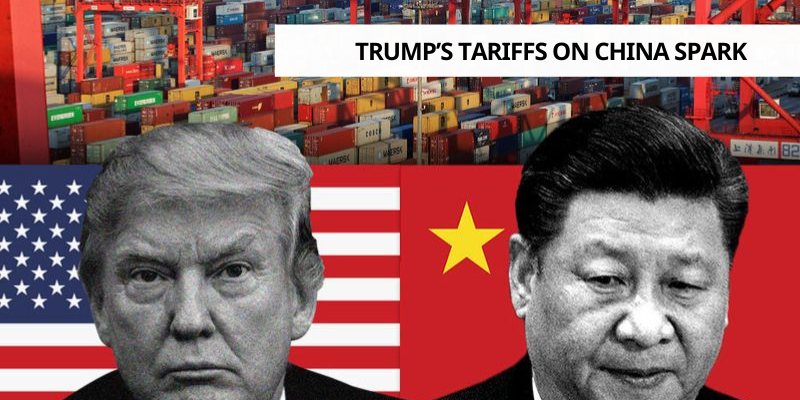April 9, 2025 – The cryptocurrency market is reeling from the ripple effects of U.S. President Donald Trump’s escalating trade policies, particularly his recent tariff hikes on Chinese goods. As tensions between the world’s two largest economies intensify, the crypto sector—often viewed as a barometer of global financial sentiment—has been thrust into chaos, with Bitcoin and altcoins facing sharp declines. This report unpacks the catalysts behind the market’s upheaval, the broader economic implications, and what lies ahead for digital assets in this volatile climate.
Tariffs Ignite Market Sell-Off
The latest salvo in Trump’s trade war came with a steep increase in tariffs on Chinese imports, announced in early 2025, aimed at pressuring Beijing to curb fentanyl trafficking and address trade imbalances. BlogMeme notes that the tariffs, now ranging from 10% to 50% on various goods, have triggered a swift reaction across financial markets.
On February 3, as the measures took effect, Bitcoin plummeted below $93,000—its lowest level in weeks—shedding over $200 billion in market capitalization. The broader crypto market followed suit, with altcoins like Ethereum and Solana recording double-digit losses, reflecting a flight to safety among investors rattled by the uncertainty.
Why Crypto Is Bearing the Brunt
Experts attribute the crypto sell-off to a confluence of factors tied to Trump’s policies.
First, the tariffs threaten to disrupt global supply chains, particularly in tech and manufacturing—sectors critical to blockchain infrastructure. China, a hub for crypto mining hardware, could face export constraints, driving up costs and squeezing miners’ margins.
Second, the strengthening U.S. dollar, bolstered by Trump’s “America First” agenda, has historically pressured Bitcoin’s value, as investors pivot to traditional safe-haven assets.

China’s Retaliation and Market Fallout
Beijing’s response has further fueled the fire. In retaliation, China imposed counter-tariffs of up to 34% on U.S. goods, prompting fears of a prolonged trade war. The People’s Bank of China also adjusted the yuan’s reference rate to mitigate depreciation, but the currency still hit a record low of 7.37 against the dollar. This economic tit-for-tat has reverberated through Asian markets, with crypto exchanges in the region reporting heightened volatility. BlogMeme points out that Trump’s earlier promise of a crypto-friendly administration—once a boon for Bitcoin—has been overshadowed by these macroeconomic headwinds, eroding investor confidence.
Shifting Dynamics in Crypto Sentiment
The crypto market’s initial euphoria following Trump’s November 2024 election win has faded. His pledges to establish a Bitcoin reserve and ease regulations had propelled the asset to an all-time high above $108,000 in January.
However, BlogMeme suggests that the tariff escalation has shifted the narrative, exposing crypto’s vulnerability to geopolitical shocks. Analysts now question whether Trump’s pro-crypto stance can withstand the fallout from his trade policies, especially as U.S. consumer prices rise and inflation fears loom—potentially prompting tighter monetary policy from the Federal Reserve.
What’s Next for Crypto Investors?
Looking ahead, the crypto market faces a precarious path. BlogMeme warns that sustained trade tensions could keep digital assets under pressure, though opportunities may emerge for savvy traders. Bitcoin’s historical resilience suggests a potential rebound if tensions ease, but for now, caution prevails. Investors are advised to monitor U.S.-China negotiations and Federal Reserve signals closely. As Trump doubles down on his tariff strategy, the crypto sector stands at a crossroads—caught between policy promises and the harsh realities of global trade warfare.

